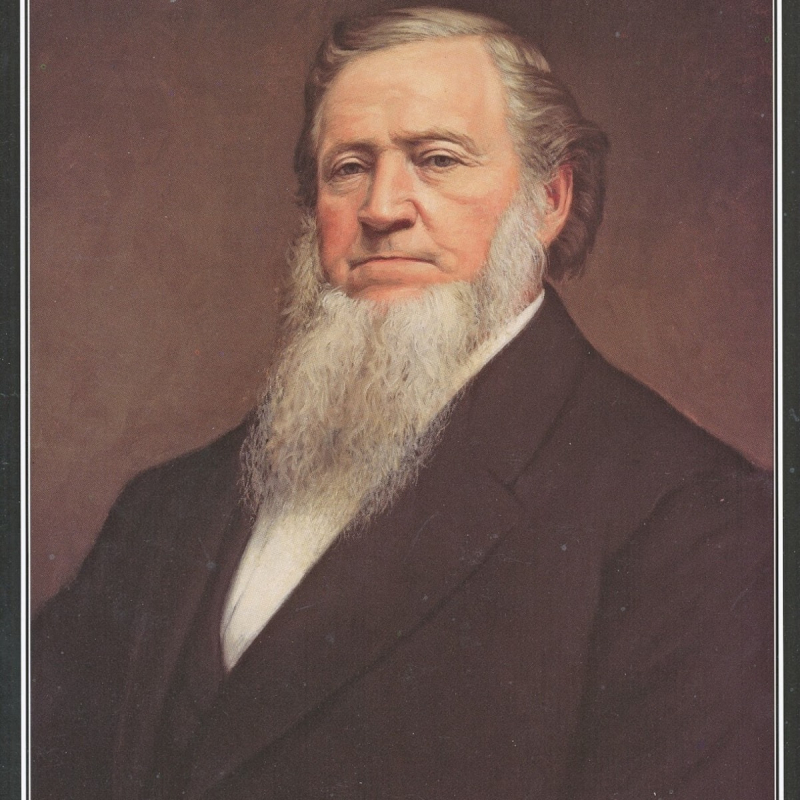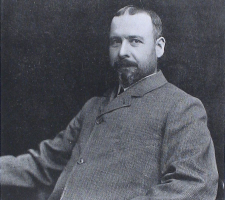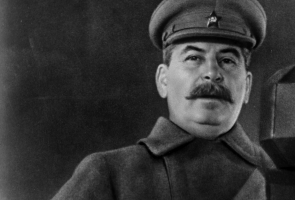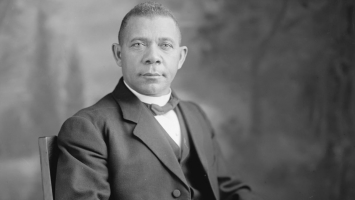Top 8 Interesting Facts About Brigham Young
Brigham Young was an American colonizer, religious leader, and politician. After Joseph Smith's passing in 1844, he became the president of the Mormon Church ... read more...in 1847. Brigham Young was among the very first people to receive a temple endowment. In this article, you will know some interesting facts about Brigham Young.
-
Brigham Young was the third-youngest of the eleven children John and Abigail ("Nabby") Howe Young had between 1786 and 1807. In 1785, John, a soldier in three of George Washington's Revolutionary War campaigns, wed Nabby. The young couple made their home on a farm in Hopkinton, Massachusetts. John, a "small, quick, wiry man," took the responsibility of providing for his family, which was rapidly expanding. But he never lost sight of his religious and moral principles. He was very reserved, excellent, and religious, according to Brigham, and he belonged to the Methodist Church from a young age.
In the brutal New England winter of January 1801, John relocated his family from Hopkinton, where they had lived for sixteen years, to a log cabin outside of Whitingham, Windham County, Vermont. On June 1st, 1801, Brigham Young was born here, five months later. For almost three years, the family remained at Whitingham as John cleared forest to make the land fit for farming.
Despite John's industry and some opportunities for economic growth, the Youngs never achieved financial success. Brigham reflected that his father was a hardworking, honest, and poor man whose mind seemed to spread from east to west and north to south. Until the day of his passing, he yearned to rule the globe.

Photo: Religious study center 
Photo: History -
One of the interesting facts about Brigham Young is that he worked as a carpenter and painter at an early age. Young left his home at the age of 16 to make a living and eventually worked as an apprentice painter, glazier, and carpenter in Auburn and New York. At the age of 16, Brigham's father informed him that he could now have his time go and provide for himself. His father stopped running, jumping, and using my strength in vain.
On his father's property, roughly 550 feet from his father's house, Brigham Young constructed a house and a carpentry shop. In that shop, he used the lathe to convert wood pieces into furniture. The machinery was powered by a dammed creek that was close to the carpenter business. Brigham put in a lot of effort and was proud of his job. He once received praise for his work that he had believed all his life that that which was worth doing was worth doing well, and have considered it as much a part of his religion to do honest, reliable work, such as would endure, for those who hired him, as to attend to the service of God's worship on the Sabbath.

Photo: Church history Source: BYU Journeys -
In 1830 a young man named Samuel Smith, Joseph Smith's brother, came to Mendon to introduce about the newly established Church, The Church of Jesus Christ of Latter-day Saints|Church of Christ, or Mormon Church. Smith sent Brigham's brother Phineas a copy of the Book of Mormon, who read it and gave it to John Young, Brigham's father. It was given by John Young to his daughter, who then handed it to Brigham Young.
Although curious, Brigham remained cautious. He continued to read the Bible on his own because he had grown weary of the denominations of his day. He thoroughly examined the Book of Mormon for two years and submitted it to every test he could think of. He also read and studied the Bible.
Early in 1832, a young Mormon missionary gave Brigham Young a testimony of the Book of Mormon. Later, Brigham claimed that this humble testimony burned into his bones and told him the truth. In the spring of 1832, he and his family—including his brothers—were baptized. Although his wife was also baptized, Abigail passed away from tuberculosis a few months later. In the areas near Mendon, Brigham started preaching the restored message of Jesus Christ right away. During these missionary outings, he placed his kids in the hands of fellow convert Heber C. Kimball at Mendon.

Book of Mormon central Source: Book of Mormon central -
One of the interesting facts about Brigham Young that many people do not know is that he offered his services for Zion’s Camp Rescue Expedition. In 1833, Brigham paid a visit to the Kirtland, Ohio, congregation of the Latter-day Saints. He made the choice to establish the Kirtland kingdom here. After that, Brigham relocated to Missouri where he took part in a mission to save Zion's Camp.
Joseph Smith was the captain of this rescue operation. This expedition's goal was to aid underprivileged and persecuted Latter-day Saint settlers. Despite being a challenging voyage, this one lay the foundations for his church service following Joseph Smith. Brigham Young first encountered Joseph Smith in Kirtland during this period.
The Prophet, who had returned to Kirtland with the majority of the marchers, instructed Brigham and Joseph Young to gather the missionaries from Zion's Camp for a sort of mission reunion in February 1835. Brigham Young said that they had completed everything in Zion's Camp that they had intended to do when asked what they had gained by their prolonged absence from home, work, and personal matters.

Photo: Wikipedia Source: Discursos SUD -
Joseph Smith taught Brigham Young about multiple marriages. He had multiple spouses, the first of them being Lucy Ann Decker Seeley. When he was 41 years old, he wed Lucy (Lucy was 20). Before having plural marriage, Brigham conducted in-depth research on the subject and spent all of his time in study and prayer. After fully understanding the concept of plural weddings, he married with much reluctance. Mary Ann, the wife, gave her approval for it to be done. One of the interesting facts about Brigham Young is that he had 56 children from 16 women and almost 27 marriages.
It is challenging to make sense of Brigham Young's marriages given their extreme variation. He wed and was sealed to a young and elderly woman (Clarissa Decker, 15 and Hannah Tapfield King, 65). He wed widows and widowed women. The most peculiar thing is that he was sealed to his first two mothers-in-law. More controversially, he married women who were already married.
Brigham Young built the Lion House in 1856 to house his large family. Along with the Beehive House, another 1854 structure built by the Brigham Young family, this house is still recognized as a landmark in Salt Lake City. Young and his wife Mary Ann Angel spent most of their time in the Beehive House, but every evening they would all gather at the Lion House for prayer and meals.

Photo: Wikipedia 
Photo: Book of Mormon central -
When Joseph Smith was killed by an anti-Mormon mob in 1844, Brigham Young was on the East Coast soliciting donations for the magnificent temple that was being built in Nauvoo. At that time, the Church was brutally persecuted. Young planned an evacuation to bring the church together after his return. He led the Mormons westward. They first made Nebraska their home before moving to Utah's Salt Lake Valley. Young was quite optimistic about Mormons' eventual emancipation. He had trust that they would one day be able to worship and live their lives in accordance with their faith's rules.
Late in 1847, Young went back to the east to lead the second group of Mormons. Nearly 2,000 Mormons had relocated to the Great Salt Lake Valley by the end of 1847. Today, Utahns still commemorate the day they landed there. It is on the 24th of July - the day Brigham Young Settled in the Great Salt Lake Valley, which is called Pioneer Day.
Brigham Young was formally chosen as the new leader of the church in 1848. The charismatic Young imitated the great prophets and leaders of ancient Israel during the following few decades as thousands of Mormons moved to Salt Lake City, gaining the nicknames "Lion of the Lord" and "American Moses."

Photo: History 
Photo: History -
A fascinating fact about Brigham Young is that he served as the governor when Deseret was founded in March 1849. Congress suggested drastically narrowing the state borders, and Utah Territory was founded the following September. Young was chosen as the new governor of the Utah Territory in 1850 when the United States had taken control of the Great Salt Lake Valley region following the Mexican-American War. His rule over the region was theocratic, with church beliefs superseding all other laws. Among other things, he maintained the restrictions on African American membership in the church and prohibited Black males from becoming Mormon priests.
Brigham Young and others believed that a university was required to prepare men and women as elementary school teachers due to the rising need for children's education. The University of Deseret began operations on November 11, 1850, at the residence of a local citizen named Mrs. John Pack without an official structure. For the duration of the first quarter, the Pack home continued to serve as the University of Deseret's temporary campus.
During the late 1860s, Utah experienced many changes. It was no longer isolated by the construction of the railroad. The expansion of the economy allowed for the building of the University of Deseret's main campus. The name of the institution was changed to the University of Utah by the Legislative Assembly in 1892.

John Pack Home (Photo: this is the place) 
Photo: KSL TV -
Brigham Young vigorously opposed Utah's participation in the Civil War, especially after the Morrill Anti-Bigamy Act, which effectively forbade plural marriage in U.S. territories, was passed in 1862. Congress had previously rejected requests for Utah statehood. Later, the law led to charges against a number of church leaders, including Young. Young was not found guilty, but a case involving his secretary, George Reynolds, reached the U.S. Supreme Court, which ruled in 1879 that polygamy was not protected by the First Amendment and that the law was constitutional. Although Young's health started to deteriorate by the summer of 1877, he continued to be an active member of the Mormon church right up until his passing.
Brigham Young passed away in Salt Lake City on August 29, 1877, at the age of 76. Although the precise reason of his death is unknown, it is thought that an appendix rupture was the culprit.
His final words were "Joseph! Joseph! Joseph!"—a reference to the late Joseph Smith Jr., the movement's founder. Young's funeral was held at the Tabernacle on September 2, 1877, with anywhere between 12,000 and 15,000 people in attendance. In the center of Salt Lake City, he is buried on the grounds of the Mormon Pioneer Memorial Monument. On June 10, 1938, members of the Young Men and Young Women groups, which he created, erected a bronze memorial at the grave site.

Photo: Wordpress 
Photo: Mapio





























